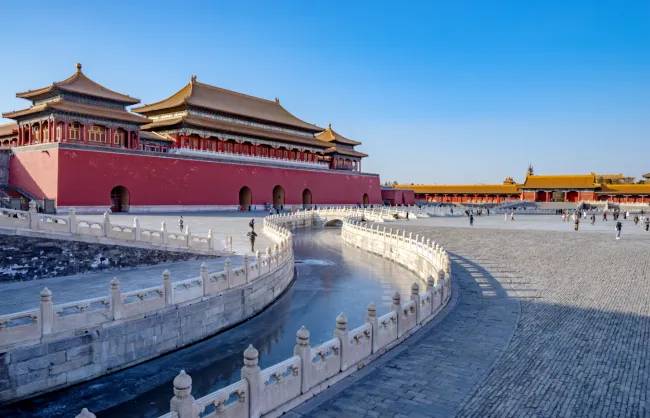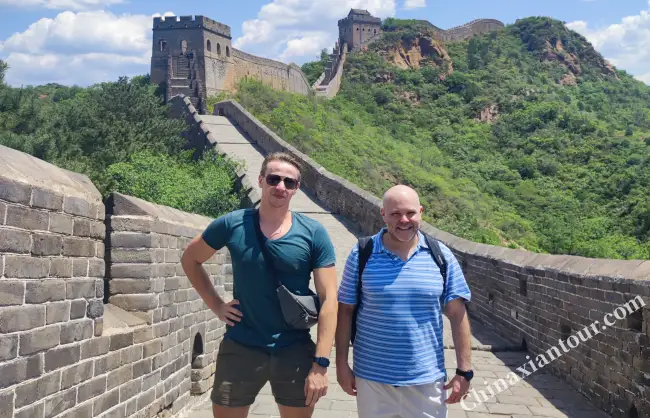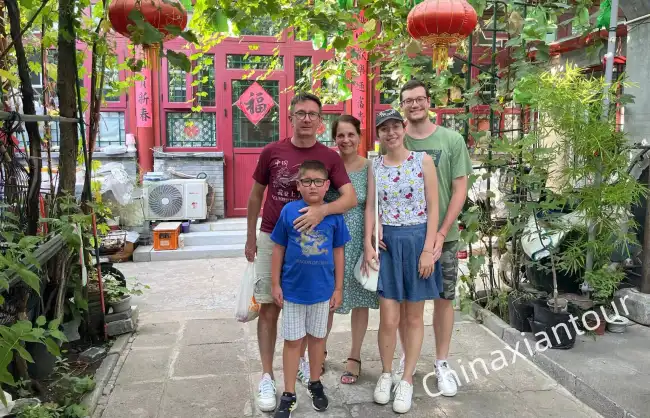Old Beijing, with its rich history and culture, still affects the lifestyle of Beijingers. For instance, the elders riding bikes through hutongs, the craftsmen making handicrafts by the side of the streets, and the children playing in the yards, all show traces of this ancient city. Though this city is filled with modern skyscrapers, Beijing still shimmers with historic charm throughout time.
History of Beijing
As the political, cultural, and economic heart of China since the Jin Dynasty, Beijing’s historical significance is unparalleled. The Old Beijing’s history dates back to over 3,000 years ago during the Shang Dynasty when it was part of the territory of the Yan State, and Yandu was given as the old name of Beijing at that time. During the Qin Dynasty, Beijing was primarily a frontier region and relay station, and the strategic fortifications of the Great Wall were built then.
Thereafter in the Sui and Tang Dynasties, a large-scale urban construction was developed in Beijing, turning it into a vital commercial and cultural center. During the Ming and Qing Dynasties, Old Beijing served as the imperial capital, and the Forbidden City was constructed then and used as the imperial palace and residence of the emperors.

Historical Sites in Beijing
1. The Palace Museum
This is an iconic place for you to see Old Beijing. Formerly named the Forbidden City, which was the imperial palace for the Ming and Qing Dynasties, the Palace Museum boasts the largest and most well-preserved wooden structure in the world. It is famous not only for its grandeur of palace architecture but also its rich collection of cultural relics, including paintings and calligraphy, ceramics, bronze ware, jade, clocks, and more, with a total number exceeding 1.8 million pieces.
2. Temple of Heaven
To discover the Old Beijing, never miss the Temple of Heaven. Used to be the site for the emperors of the Ming and Qing dynasties to perform the Heaven Worship Ceremony, the Temple of Heaven is a sacred place with circular architecture and exquisite decorations. Besides, this architectural marvel is a UNESCO World Heritage site, allowing visitors to learn the traditional Chinese beliefs in the “Heavenly Mandate” and the art of Ming dynasty architecture.
3. Summer Palace
The Summer Palace, along with the Chengde Mountain Resort, the Humble Administrator’s Garden, and the Lingering Garden, is known as one of the “Four Best Classical Gardens of China.” Used to be a retreat for emperors of the Qing Dynasty, the Summer Palace is a large-scale landscape garden with picturesque scenery and exquisite architecture and is famed as “the Museum of Imperial Garden.” By visiting there, you can still see the imprints of the old Summer Palace in Beijing, China.
4. The Great Wall
Built first in the 3rd century BC and extended and repaired for over 2000 years, the Great Wall is one of the Seven Wonders of the World. Composed of walls, trenches, watchtowers, and fortresses, the Great Wall presents ancient China’s remarkable engineering prowess and is a good attraction for you to explore Old Beijing.
Besides, the Great Wall is divided into many sections, among which the Badaling, Mutianyu, and Jinshanling sections are the most famous ones that show stunning views and formidable structures.

5. Ming Tombs
Located in the peaceful Tianshou Mountains of Changping District, Beijing, the Ming Tombs is a UNESCO World Heritage site and the burial grounds of thirteen emperors of the Ming Dynasty. This site shows the grandeur of the Ming royal family and the essence of ancient Chinese architecture. Hence, it’s an ideal site to marvel at Old Beijing. You can explore the magnificent Changling Tomb and the uniquely excavated Dingling Tomb and admire exquisite stone carvings there.
6. Yonghe Palace
Yonghe Palace, also known as the Lama Temple, is a famous Tibetan Buddhist temple located in Beijing. Built in the Qing Dynasty, it is one of the largest and well-preserved temples with profound significance of Buddhism in China. Its intricately designed woodwork, murals, and towering statue of Maitreya Buddha present the charm of Old Beijing and attract visitors a lot.
7. Prince Gong’s Mansion
Featuring enchanting gardens, refined pavilions, and intricately decorated halls, this mansion is a historical site that shows visitors a glimpse into the wealthy life of Qing Dynasty nobility. It was the largest prince mansion of its kind in the Qing Dynasty, and it witnessed the Qing Dynasty’s peak and decline. If you are interested in Chinese history and trying to trace Old Beijing, never miss this site on your Beijing tours.
8. Beijing Guozijian (Imperial Academy)
Established and developed through the Yuan, Ming, and Qing Dynasties, Beijing Guozijian was one of the ancient highest educational institutions in China. As a center of Confucian education, it not only cultivated scholars and officials but also preserved and promoted the traditional Chinese culture. Visiting there, one can experience the ancient studying atmosphere, explore China’s educational system, and admire the classical architecture and artifacts of Old Beijing.
Things to Do to Discover the Old Beijing
Except for exploring the historical sites in Beijing, there are still many other things to do to experience the Old Beijing.
1. Stroll through the Old Beijing Hutong
Being an icon of Old Beijing, hutong is a place where one can catch a glimpse of the unique and authentic experience of local life. To tour more about ancient Beijing, you can walk or take a rickshaw through these narrow alleys and see how the locals live there. By the way, Sanmiao Hutong is the oldest hutong in Beijing, whose history dates back over 900 years to the Liao Dynasty.
2. Explore the Traditional Siheyuan
A siheyuan is a traditional Chinese compound residence mainly famous in Beijing, with four sides surrounding a courtyard in the middle. These courtyard houses are designed intricately with traditional architecture, showing the way of life of Beijingers in the past. Some siheyuan have been converted into museums, and you can take a visit there and learn more about the architecture and culture of the Old Beijing.

3. Taste Traditional Food in Beijing
Don’t hesitate to try the delicious local foods when touring Old Beijing City. Peking Duck, Zha Jiang Mian (Old Beijing fried sauce noodles), Lu Zhu Huo Shao (stewed pork with baked wheaten cake), Lüdagun (glutinous rice rolls), Chaogan (stewed liver), and Douzhi (fermented mung bean milk) are the most popular Beijing foods that offer the authentic flavors of Beijing. Besides, there are also Old Beijing cafes and barbecues that await you to explore.
4. Discover Old Shops
Beijing houses many famous old shops that have been serving locals for generations. These shops, often tucked away in hutongs or historic districts in Old Beijing, sell everything from traditional Chinese medicine and handcrafted goods to snacks and antiques. You can take a tour of the famous time-honored brand shops in Beijing, such as the Tong Ren Tang, Rui Fu Xiang Silk Shop, Nei Lian Sheng Shoe Shop, Ma Ju Yuan Hat Shop, and Dao Hua Xiang Shop.
5. Visit an Old Tea House
Visiting an old tea house is a must-do thing on your China tours to Beijing. These tea houses allow you to enjoy a variety of Chinese teas while appreciating traditional music or performances including erhu and Peking Opera. Among the tea houses in Old Beijing, Lao She Tea House, named after the famous Chinese writer Lao She, is a popular one that treats you with a feast of eyes and ears, bringing you back to the old times through excellent performances. You may like Top 8 Things to Do During a Layover at Beijing Airport









